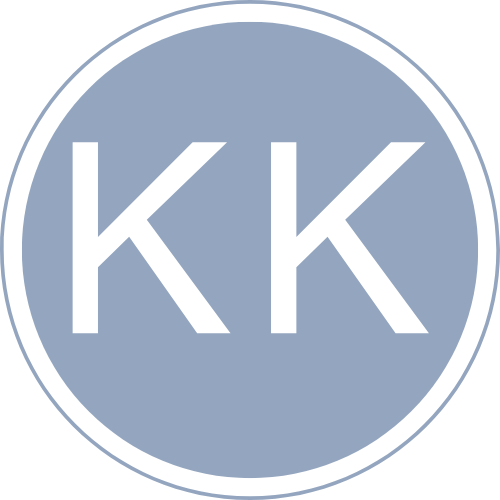by Karen Krossing | Dec 22, 2010 | On Writing
 Check out this quirky and insightful interview of me at author Sarah Raymond‘s blog. Sarah’s first young-adult novel Signs of Martha will be published with Great Plains Publications in Spring 2011. What is Sarah’s novel about, you ask? Here’s a teaser: When Martha apprentices under an off-beat signpainter, she paints herself into an uncomfortable corner. Good luck with the novel, Sarah!
Check out this quirky and insightful interview of me at author Sarah Raymond‘s blog. Sarah’s first young-adult novel Signs of Martha will be published with Great Plains Publications in Spring 2011. What is Sarah’s novel about, you ask? Here’s a teaser: When Martha apprentices under an off-beat signpainter, she paints herself into an uncomfortable corner. Good luck with the novel, Sarah!
by Karen Krossing | Dec 18, 2010 | On Writing
There are many ways to begin a story: one is writing from personal experience. Here’s how you can use this technique.
Ask yourself what moments from your childhood stand out for you? Which ones can you recall in vivid detail, which stories did your parents repeat to you over and over, which ones were the most terrifying or the most exhilarating? When you find a moment with energy, write it down. It may not become a story right away. It may begin as an anecdote. But collect these anecdotes until you begin to find the links and connections that will pull them into a story.
You may want to fictionalize personal experience, combining real events with imagination to make a story. I used this technique in Take the Stairs, which is based on personal experiences I had as a teen as well as those of people around me. Or, you may want to retain the flavour of actual events, using real names and places, like in a memoir. Either way, you’re looking to arrange reality into a story.
Here’s a quote from Alice Munro that I like: “Anecdotes don’t make good stories. Generally I dig down underneath them so far that the story that finally comes out is not what people thought their anecdotes were about.”
In later posts, I’ll explore how to write by observing people and by asking “what-if” questions.
by Karen Krossing | Nov 30, 2010 | On Writing
A new study conducted by Antanas Sileika, Director of the Humber School for Writers, complied information about the ages of Canadian fiction and nonfiction authors who publish for the first time. It turns out that people do not publish quite as young as Sileika first thought. The average age of the first-time Canadian author is 42, which also happens to be the “Answer to the Ultimate Question of Life, the Universe, and Everything” in Douglas Adams’s The Hitchhiker’s Guide to the Galaxy series of science fiction novels. Is this a coincidence? Perhaps not.
by Karen Krossing | Oct 3, 2010 | Mentoring, On Writing, Presentation News
A nine-year-old girl who loves to write. A birthday party. What better way to celebrate her birthday than with writing games?
This Saturday, I conducted a series of writing games for nine-year-old Saskia and 19 of her friends. As the guests entered Saskia’s home, they were greeted by the words “Creativity World” written in 12 different languages. Together, we played games with words – creating evil villains, writing using masks, and using “story dice” to tell stories as a group. I enjoyed getting a glimpse into the creative worlds of these girls. Saskia and her friends are fine writers.
It was an intriguing idea for a birthday party – one that I would have enjoyed when I was a kid. Heck, I’d even enjoy it now!
by Karen Krossing | Sep 27, 2010 | On Writing
 I just returned from a three-day writer’s retreat. Do I look relaxed in this photo?
I just returned from a three-day writer’s retreat. Do I look relaxed in this photo?
It’s amazing how fast the time goes when writing. Three days are over in a blink. Writing a novel is such a time-intensive pursuit, while an eager reader can devour that effort in mere hours.
What’s great about a retreat is simply having the quiet, empty space to ponder characters and to delve deeper into who they are, what drives them, what irks them, what moments will change their lives. And these characters do live. There’s no mistaking it. They come to life in quiet writerly moments, and they continue to thrive in the minds of readers.
by Karen Krossing | Aug 6, 2010 | Mentoring, On Writing, Presentation News
I’ve posted a new section on my website of writing activities based on my WordPlayer writing program. I first developed the program as a lunch-time drop-in writing club at Presteign Heights Public School in Toronto during 2005 to 2006. Since then, I’ve conducted WordPlayer workshops throughout Ontario and Quebec with kids, teens, and adults, further developing the program. Click here to explore new ways to start writing, how to share your writing, and how to revise.
 Check out this quirky and insightful interview of me at author Sarah Raymond‘s blog. Sarah’s first young-adult novel Signs of Martha will be published with Great Plains Publications in Spring 2011. What is Sarah’s novel about, you ask? Here’s a teaser: When Martha apprentices under an off-beat signpainter, she paints herself into an uncomfortable corner. Good luck with the novel, Sarah!
Check out this quirky and insightful interview of me at author Sarah Raymond‘s blog. Sarah’s first young-adult novel Signs of Martha will be published with Great Plains Publications in Spring 2011. What is Sarah’s novel about, you ask? Here’s a teaser: When Martha apprentices under an off-beat signpainter, she paints herself into an uncomfortable corner. Good luck with the novel, Sarah!

 I just returned from a three-day writer’s retreat. Do I look relaxed in this photo?
I just returned from a three-day writer’s retreat. Do I look relaxed in this photo?